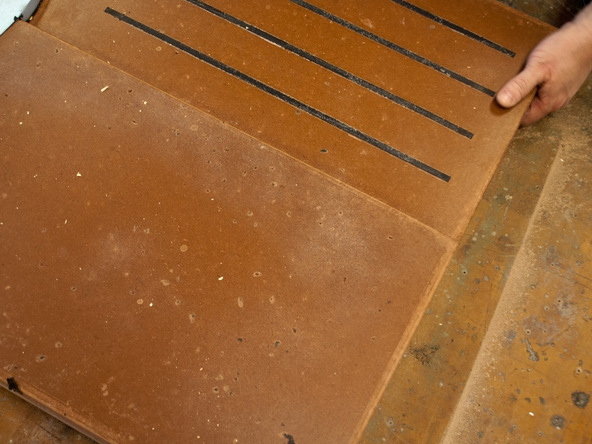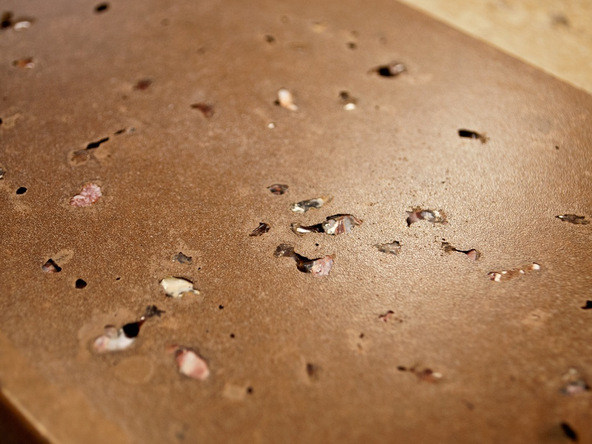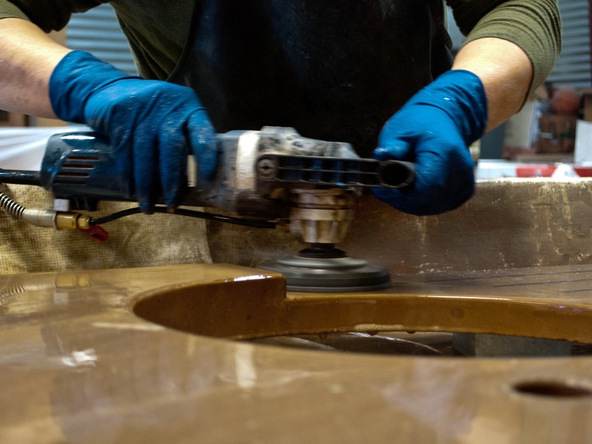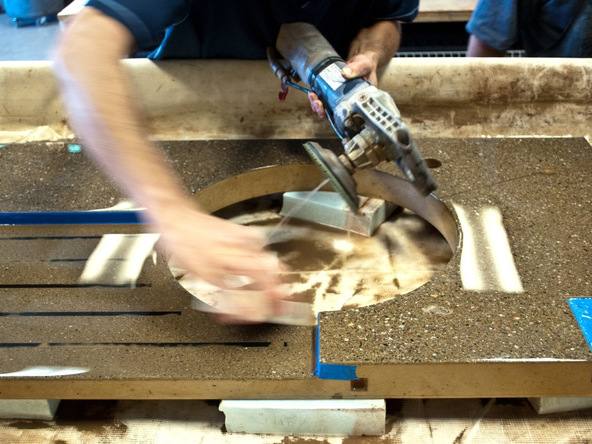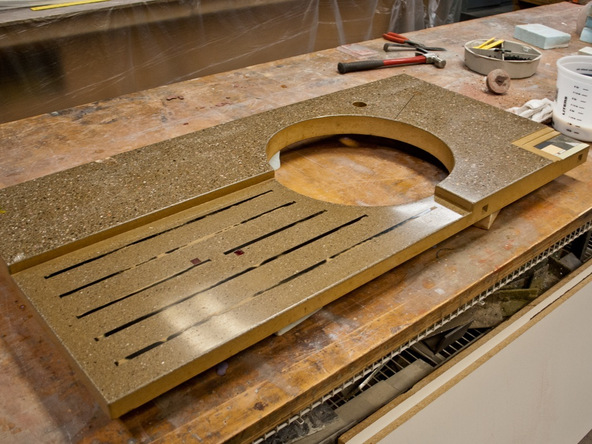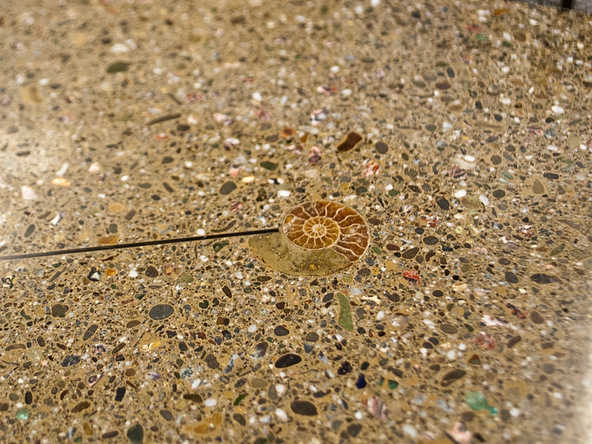Precast Concrete Countertops
SIX: POLISH THE COUNTERTOP
Polishing concrete countertops can be completed with many different methods and regardless of which method you choose, dry polishing or wet-polishing, the basics are essentially the same.
Just like sanding wood, our objective is to create a smooth uniform surface that’s free of gouges, grooves, or scratches. You’ll want to consider how deep to polish/grind the surface of the concrete with an understanding that the deeper you “cut” with the polishing pads the larger the exposed aggregate will be. If your customer wants a smooth homogeneous surface with little or no aggregate exposure, then you’ll only use the higher grit diamond polishing pads like 400, 800, and 1500. But if your customer is looking for a “terrazzo” type finish, then you’ll start off with a coarse 30, 50, or 60 grit to quickly cut away unwanted material.
What You’ll Need
Step 1 – Before Polishing
Step 2 – Prepare to Polish
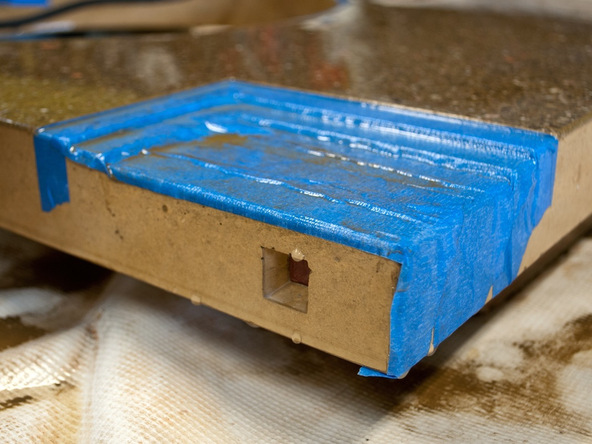
Step 3 – Polishing
Step 4 – Slurry the Countertop
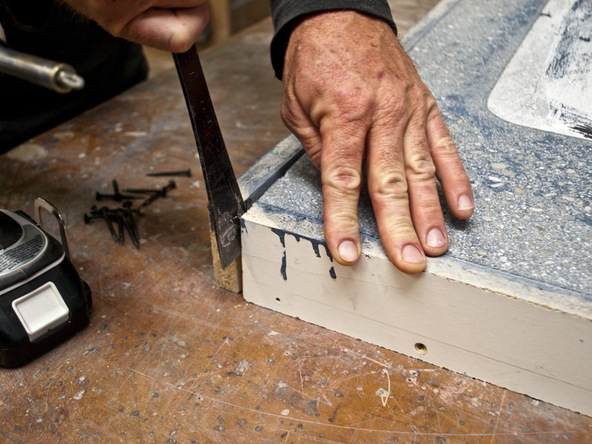
After 5 days in the mold it’s time to remove the countertop but since the concrete is still young extra care must be taken to avoid problems.
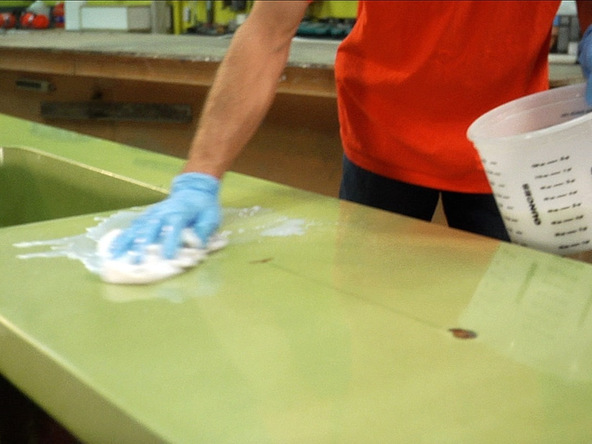
A good sealer is the best way to protect your countertop from unwanted signs of use and wear. Acidic foods like citrus and mustard will even etch concrete.

